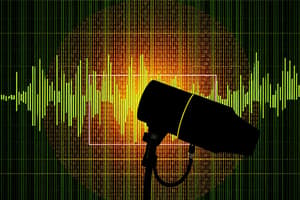Podcast
Questions and Answers
What is the main articulatory principle used to classify speech sounds into vowels and consonants?
What is the main articulatory principle used to classify speech sounds into vowels and consonants?
- Distribution of muscular tension
- Frequency of occurrence in language
- Presence or absence of obstruction (correct)
- Force of the air stream
What causes noise in the articulation of consonants?
What causes noise in the articulation of consonants?
- The distribution of muscular tension
- The weak force of the air stream
- The presence of supralaryngeal cavities
- The removal of air stream obstruction (correct)
How is the muscular tension distributed in the articulation of vowels?
How is the muscular tension distributed in the articulation of vowels?
- Concentrated at the place of obstruction
- Evenly throughout the speech organs (correct)
- In the supralaryngeal cavities
- Spread in a wave-like pattern
How is the force of the air stream in vowels compared to consonants?
How is the force of the air stream in vowels compared to consonants?
What is the articulatory boundary between vowels and consonants described as?
What is the articulatory boundary between vowels and consonants described as?
How is muscular tension distributed in the articulation of vowels?
How is muscular tension distributed in the articulation of vowels?
What is the main articulatory principle used to classify speech sounds into vowels and consonants?
What is the main articulatory principle used to classify speech sounds into vowels and consonants?
What effect is caused by the removal of obstruction in the articulation of consonants?
What effect is caused by the removal of obstruction in the articulation of consonants?
How is the force of the air stream in vowels compared to consonants?
How is the force of the air stream in vowels compared to consonants?
Is the articulatory boundary between vowels and consonants well marked?
Is the articulatory boundary between vowels and consonants well marked?
What is the main difference between voiceless and voiced consonants?
What is the main difference between voiceless and voiced consonants?
What is the acoustic boundary between vowels and consonants primarily based on?
What is the acoustic boundary between vowels and consonants primarily based on?
What is the main criterion used to classify speech sounds into vowels and consonants?
What is the main criterion used to classify speech sounds into vowels and consonants?
What is the distinguishing factor in the spectrum of a vowel compared to a consonant?
What is the distinguishing factor in the spectrum of a vowel compared to a consonant?
What is the role of different groups of muscles in vowel and consonant production?
What is the role of different groups of muscles in vowel and consonant production?
Flashcards are hidden until you start studying
Study Notes
Classification of Speech Sounds
- Speech sounds are classified into vowels and consonants primarily based on the degree of obstruction in the vocal tract during articulation.
- Vowels are produced with minimal obstruction, allowing for a free flow of air, while consonants involve greater constriction.
Articulatory Noise in Consonants
- Noise in consonant articulation is caused by the turbulence created when airflow is obstructed, leading to varying degrees of frication or plosion.
Muscular Tension in Vowels
- Muscular tension during vowel production is evenly distributed throughout the vocal tract, allowing for a smooth resonance without significant constriction.
- This results in a rich, full sound quality that is characteristic of vowel sounds.
Air Stream Force in Vowels vs. Consonants
- The force of the airstream in vowels is generally continuous and unimpeded, in contrast to consonants where the airflow is interrupted or modified by constrictions.
Articulatory Boundary Description
- The boundary between vowels and consonants is described as a gradient rather than a strict demarcation, reflecting the fluid nature of speech sound production.
Obstruction Removal Effect
- The removal of obstruction in consonants typically produces a shift to vowel-like qualities, as airflow becomes less restricted, creating a clearer sound.
Voiced vs. Voiceless Consonants
- The main difference between voiceless and voiced consonants lies in vocal cord vibration; voiced consonants involve vibration, while voiceless consonants do not.
Acoustic Boundary Criteria
- The acoustic boundary between vowels and consonants is primarily based on formant patterns, with vowels exhibiting distinct resonance characteristics compared to consonants.
Distinguishing Features in Sound Spectrum
- Vowels are distinguished from consonants by their harmonic structure; vowels have a more prominent and stable formant pattern, leading to a richer sound.
Muscle Groups in Sound Production
- Different groups of muscles are engaged during vowel and consonant production; vowels require a balanced use of intrinsic laryngeal and pharyngeal muscles, while consonants activate specific articulatory gestures for obstruction.
Studying That Suits You
Use AI to generate personalized quizzes and flashcards to suit your learning preferences.




